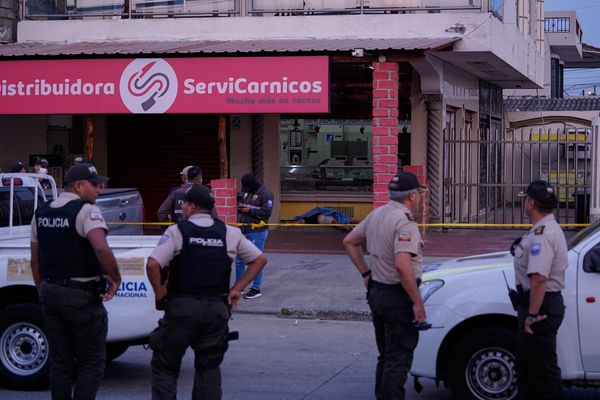The way we use electricity is changing. From camping in the wilderness to preparing for power outages at home, people are searching for energy solutions that are reliable, versatile, and easy to carry. The portable power station has become one of the most popular answers to this need, offering clean energy without the noise or fumes of traditional generators.
But with so many models on the market, choosing the right one can feel overwhelming. This guide will walk you through the essentials so you can select the best fit for your lifestyle.

What Is a Portable Power Station?
A portable power station is essentially a high-capacity rechargeable battery with an inverter and multiple outlets. It stores electricity and delivers it when you need it, making it a dependable alternative to fuel generators.
Key features include:
- Battery storage: Usually lithium-ion or lithium iron phosphate (LiFePO4), known for durability and safety.
- Inverter: Converts stored direct current (DC) into alternating current (AC), the type most household devices use.
- Multiple ports: From AC outlets for appliances to USB-C ports for smartphones and laptops.
- Recharge options: Can be charged from wall outlets, car sockets, or solar panels for renewable energy.
Unlike gas generators, portable power stations operate silently, produce no exhaust, and can safely be used indoors or outdoors.
Key Factors to Consider Before Buying
a. Battery Capacity (Wh)
Battery capacity is measured in watt-hours (Wh) and tells you how much energy the unit can store. The higher the number, the longer it can power your devices.
Examples:
- 300Wh: Enough to charge a smartphone 20 times or run a 10W LED light for 30 hours.
- 500–700Wh: Can power a laptop for 8 to 10 hours or keep a portable cooler running for a full day.
- 1000Wh+: Suitable for RV appliances, mini-fridges for two days, or as emergency backup for essential household devices.
Capacity is the most important factor to consider because it determines how long the power station will last before needing a recharge.
b. Output Power (W)
While capacity tells you how long the battery lasts, output power (measured in watts) tells you what devices it can actually run.
- Rated power is the continuous output the unit can handle.
- Peak power is the maximum surge it can deliver for a short period, useful for appliances with startup spikes like blenders or induction cookers.
Examples:
- A phone charger requires about 10W.
- A laptop typically draws 60–100W.
- A coffee maker or small microwave might demand 800–1000W.
If your devices need 600W, look for a power station with at least 800W rated output to avoid overload.
c. Port Selection
Versatility comes from the number and variety of ports available. The best portable power stations include:
- AC outlets for appliances like mini-fridges or projectors.
- DC car sockets for coolers or pumps.
- USB-A and USB-C ports for phones, tablets, and laptops.
Having multiple ports allows you to charge or power several devices at the same time, which is especially useful for families or groups during camping trips.
d. Charging Methods
A reliable portable power station should support multiple charging methods. This flexibility ensures that you can recharge it no matter where you are.
- Wall charging: The fastest and most common option, using a household outlet.
- Car charging: Convenient for road trips, allowing you to recharge while driving.
- Solar charging: The most sustainable method. For example, a 200W solar panel can recharge a 500Wh unit in about 3–4 hours of direct sunlight. For longer adventures or emergencies, solar charging is invaluable since it extends off-grid independence.
e. Battery Type and Lifespan
The battery chemistry inside a portable power station determines how long it lasts and how safe it is.
- Lithium-ion batteries: Lightweight and cost-effective, usually rated for 500–1000 cycles.
- Lithium iron phosphate (LiFePO4): Heavier but far more durable, often rated for 3000+ cycles. They also offer better thermal stability, making them safer for frequent use.
For casual campers, lithium-ion is often sufficient, while heavy users and professionals may find LiFePO4 a better long-term investment.
f. Portability
Portability is not just about weight, but also about design.
- Small units (300–500Wh): Usually weigh 4–7 kilograms and are easy to carry by hand, ideal for weekend camping.
- Medium units (500–1000Wh): Weigh 8–12 kilograms, still manageable for RV trips or family use.
- Large units (1000Wh+): Can exceed 15 kilograms, making them better suited for semi-permanent setups or vehicle-based travel rather than hiking.
When choosing, balance capacity against how much weight you are willing to carry.
g. Safety Features
Safety is essential when dealing with stored energy. High-quality portable power stations include:
- Overcharge protection: Prevents the battery from degrading.
- Short-circuit protection: Keeps your devices safe from damage.
- Temperature control: Prevents overheating during heavy use or fast charging.
- Surge protection: Protects sensitive electronics from sudden power spikes.
These features ensure not just longer lifespan for the power station but also peace of mind during use.
Common Mistakes to Avoid When Choosing
Only Looking at Capacity
Many buyers focus solely on battery size without considering output power. A 1000Wh unit may not run a coffee maker if the inverter cannot handle the wattage.
Ignoring Charging Speed
Fast recharging is crucial if you use your power station daily or on long trips. Some units recharge in under 2 hours, while cheaper models may take 8 hours or more.
Overlooking Solar Compatibility
For extended outdoor use, solar charging is essential. Choosing a model without this option can severely limit your independence.
Buying Too Small or Too Large
Beginners sometimes buy a unit that is too small for their needs or overspend on one that is unnecessarily large. Matching your power station to your lifestyle prevents wasted money and frustration.
Choosing Only by Price
Low-cost options often cut corners on battery quality or safety features. A slightly higher investment usually provides longer lifespan and better reliability.
Matching the Right Power Station to Your Lifestyle
For Camping Enthusiasts
If you are heading out for a weekend camping trip, a medium-capacity portable power station of around 500Wh is usually enough. It can keep LED lights running for two nights, charge multiple phones, and even run a small portable fan. Pairing it with a 100W–200W solar panel ensures you can recharge during the day.
For Families Preparing for Emergencies
A larger unit of 1000Wh or more is better suited for emergency backup at home. It can keep Wi-Fi routers, smartphones, and LED lighting powered for several days, and even run a small refrigerator to preserve food. This capacity gives peace of mind during power outages caused by storms or grid failures.
For RV Travelers and Long Road Trips
RV users benefit most from higher-capacity power stations, typically in the 1000Wh to 2000Wh range, with inverters capable of handling appliances like coffee makers or induction cookers. When combined with rooftop solar panels, this setup provides near-complete energy independence on the road.
For Outdoor Creators and Professionals
Photographers, drone pilots, and field researchers often need steady power for laptops, cameras, and drones. A 700Wh–1000Wh unit with multiple USB-C and AC outlets ensures all devices stay charged, enabling uninterrupted work even in remote areas.
Conclusion
Choosing the right portable power station is about more than just picking the biggest battery. The best choice depends on your personal lifestyle, the devices you need to power, and how often you will use it.
Key points to remember:
- Capacity (Wh) tells you how long it lasts.
- Output power (W) tells you what it can run.
- Port selection determines how many devices you can use at once.
- Charging methods and speed add convenience, especially for longer trips.
- Battery type and safety features ensure reliability and peace of mind.
From campers who need simple lighting and phone charging, to families looking for emergency backup, to professionals relying on power in the field, there is a portable power station suited to every scenario. With the right choice, you can enjoy freedom, flexibility, and security in both everyday life and unexpected situations.







